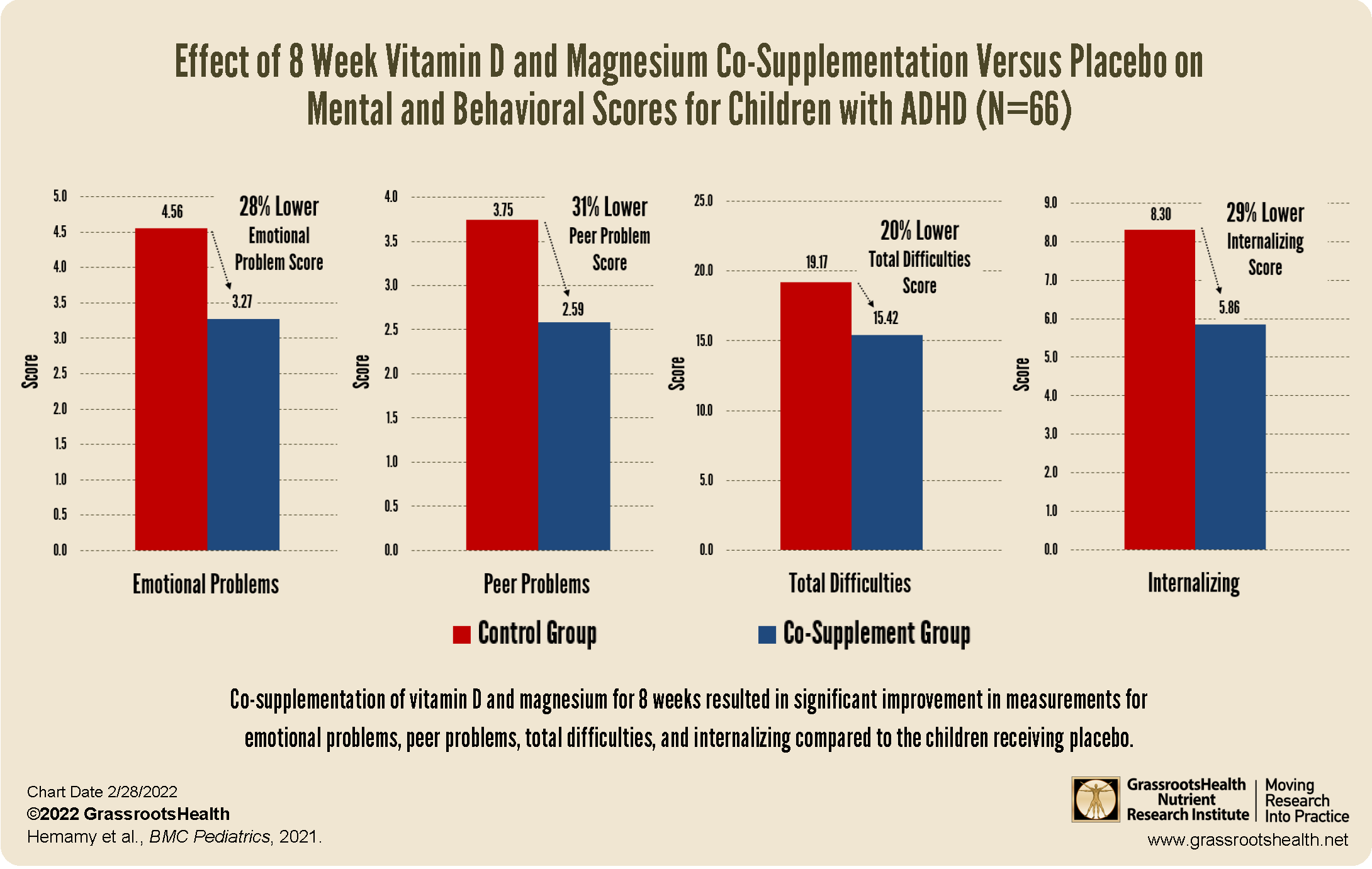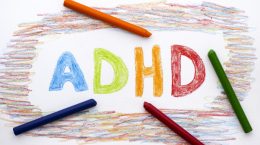Published on October 26, 2022
A review of dietary and nutritional evidence shows greatest promise for vitamin D and magnesium supplementation for the improvement of ADHD among those with low vitamin D levels
Key Points
- Research shows that diet and nutrient intake can influence the risk and severity of ADHD, and some nutritional interventions have shown promise for improving ADHD symptoms
- A 2022 review found that, for nutritional supplements, only vitamin D and vitamin D + magnesium appeared to improve ADHD symptoms when baseline levels of vitamin D were insufficient/deficient
- One important detail to keep in mind when reviewing nutrient research, especially when it comes to vitamin D and omega-3s, is that nutrient status can be a more important measurement to consider than nutrient intake

Attention Deficit Hyperactivity Disorder (ADHD) affects about 7-10% of children and teens. Symptoms include inattention, hyperactivity, and impulsivity, with several of these symptoms persisting into adulthood. Research shows that diet and nutrient intake can influence the risk and severity of ADHD, and some nutritional interventions have shown promise for improving ADHD symptoms. In fact, some studies have found that supplementation with magnesium, vitamin D, as well as omega-3 fatty acids, vitamin B6, and zinc have shown positive benefits for children with ADHD.
Review Supports Use of Vitamin D with Magnesium to Improve ADHD Symptoms, Especially when Vitamin D Levels Are Low
A 2022 review by Pinto et al. examined the evidence of dietary patterns and nutritional supplements associated with ADHD to see which had the most influence on incidence and management of symptoms. While it was concluded that healthy eating patterns and getting enough nutrients including vitamin D, iron, zinc, and omega-3 fatty acids have been associated with the progression of ADHD, the authors stated
“As for nutritional supplements, only vitamin D and vitamin D + magnesium appeared to improve ADHD symptoms when baseline levels of vitamin D were insufficient/deficient.”
A randomized, double blind, placebo-controlled trial by Hemamy et al. was one of the studies considered in this review. In this study, children receiving vitamin D and magnesium for 8 weeks had significant increases in both magnesium and vitamin D levels, as well as significant reductions in ADHD symptoms, as shown in the chart below.
Compared to the placebo group, the children receiving vitamin D and magnesium co-supplementation had significantly better
- emotional problem scores (28% lower)
- peer problem scores (31% lower)
- total difficulties score (20% lower)
- internalizing score (29% lower)
While other studies featured in the review above have shown positive results with zinc, iron, probiotic, and omega-3/omega-6 fatty acid supplementation, the authors concluded that the evidence was not strong enough to support their clinical use for ADHD.
Nutrient Status is Essential to Consider with Supplementation
One important detail to keep in mind when reviewing nutrient research, especially when it comes to vitamin D and omega-3s, is that nutrient status can be a more important measurement to consider than nutrient intake. This is due to the variability in dose-response (or how someone responds to any given dose); when supplementing with either vitamin D or omega-3s, it is impossible to know how much of a dose might be “right” for one person to the next without measuring their resulting nutrient status. For example, it is possible for a supplemental intake of 4000 IU/day to result in a serum level of 25 ng/ml (62.5 nmol/L) in one individual, and 60 ng/ml (150 nmol/L) in another. A GrassrootsHealth analysis showed that among all adult participants taking an average of 4,000 IU vitamin D per day from supplements, approximately 25% were still below the recommended 40-60 ng/ml.
In regards to omega-3 supplementation, a GrassrootsHealth analysis showed that the range of response with 1000 mg of EPA+DHA per day was 5.7% to 10.2%. This large amount of variability is similar to what we have observed for vitamin D.
With the above in mind, could the findings considering omega-3 supplementation among those with ADHD have been more positive if an omega-3 status (such as the Omega-3 Index) had been considered along with intake?
Measure Nutrient Status for You and Your Family (Save 10% with Code FirstTest10)
 Having and maintaining healthy nutrient levels can help improve health, now and for your future. Choose which to measure, such as your vitamin D, omega-3s, and essential minerals including magnesium and zinc, by creating your custom home test kit today. Add hs-CRP to measure your level of inflammation as well. Take steps to improve the status of each of these measurements to benefit your overall health. You can also track your own intakes, symptoms and results to see what works best for YOU.
Having and maintaining healthy nutrient levels can help improve health, now and for your future. Choose which to measure, such as your vitamin D, omega-3s, and essential minerals including magnesium and zinc, by creating your custom home test kit today. Add hs-CRP to measure your level of inflammation as well. Take steps to improve the status of each of these measurements to benefit your overall health. You can also track your own intakes, symptoms and results to see what works best for YOU.
Enroll and test your levels today, learn what steps to take to improve your status of vitamin D (see below) and other nutrients and blood markers, and take action! By enrolling in the GrassrootsHealth projects, you are not only contributing valuable information to everyone, you are also gaining knowledge about how you could improve your own health through measuring and tracking your nutrient status, and educating yourself on how to improve it.





